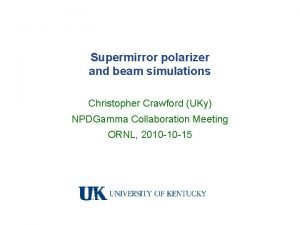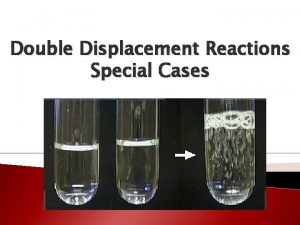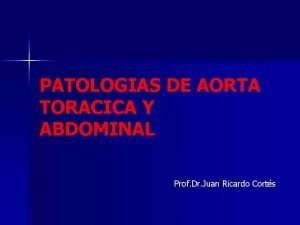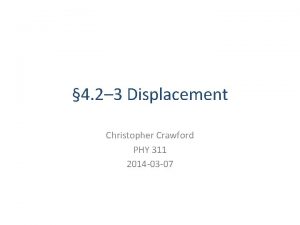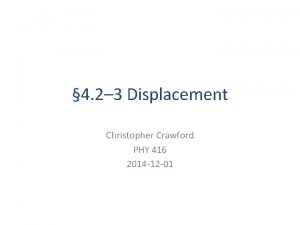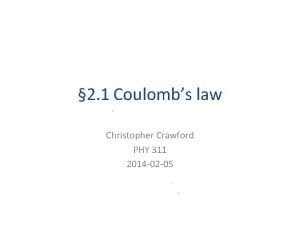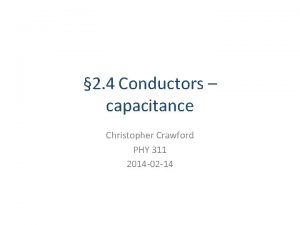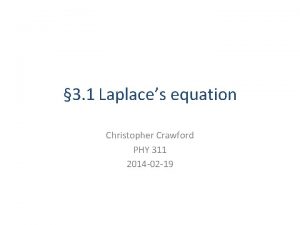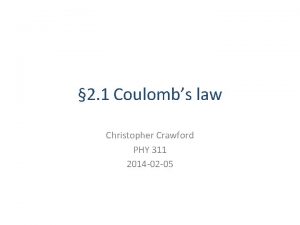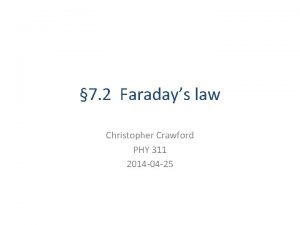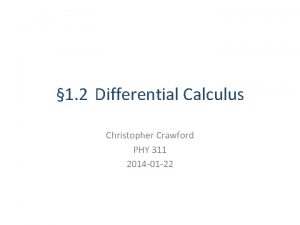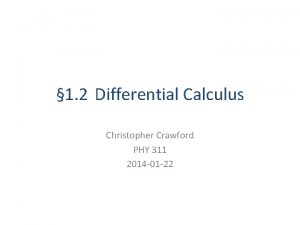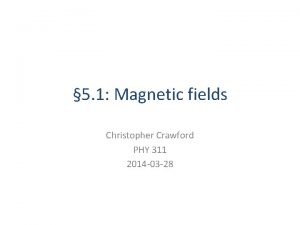4 2 3 Displacement Christopher Crawford PHY 311











- Slides: 11

§ 4. 2– 3 Displacement Christopher Crawford PHY 311 2014 -03 -07

Outline • Review – D=ε 0 E+P New Gauss’ law – displacement field boundary conditions – obtained as usual • Constitutive equation – ε = ε 0εr = ε 0(1+χe) Electric susceptibility – P vs E, compare: polarizability Dielectric constant – amplification of free charge [relative] permittivity – D vs E • Examples parallel plate capacitor polarized sphere dielectric sphere in an external field 2

New Gauss’ (flux) law: • • MACROSCOPIC formulation New field: D = ε 0 E + P (electric displacement) Derived from E, P Gauss’ laws Corresponding boundary condition Old (flow) law: • E field still responsible force -> potential energy • V is still defined in terms of E • Boundary conditions: potential still continuous 3

Polarizability vs. Susceptibility • Polarizability – Dipole moment of single atom in an electric field • Susceptibility – Polarization [density] of a material in an electric field • Relation between the two • Clausius-Mossotti relationship 4

Dielectric material properties In general the polarization is an arbitrary function of: – Electric field, position(wavelength), time(frequency), temperature, … “Electrets” even have polarization independent of E However most materials satisfy the following properties which makes it much easier to calculate the fields: • Linear – χe independent of magnitude of E – Polarization proportional to electric field • Isotropic – χe independent of direction of E – Polarization in the same direction as electric field • Homogeneous – χe independent of position – Material doesn’t change from place to place 5

Permittivity: constitutive equation • Link between D and E in Maxwell’s equations – – Susceptibility Relative permittivity (dielectric constant) Permittivity of free space [vacuum] Absolute permittivity • Relations between constants • Permittivity reflects the same material properties as susceptibility: linear, isotropic, homogeneous – In general it is a tensor (matrix) function ε(E, r, ω, …) 6

Macroscopic potential formulation • Poisson’s equation Laplace’s equation • Continuity boundary conditions 7

Example: Parallel plates w/dielectric 8

Example: Polarized dielectric 9

Example: dielectric sphere in external E 10

Example: dielectric sphere in external E 11

